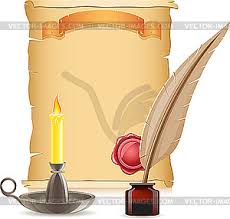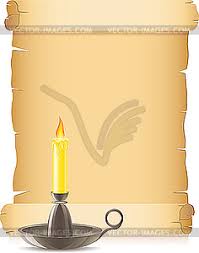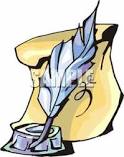SUKUK
 Sukuk is Arabic word which means
legal instrument. Sukuk (Arabic: صكوك, plural of صك Sakk,
"legal instrument, deed, check") is the Arabic name for financial
certificates, but commonly refers to the Islamic equivalent of bonds. Sukuk in general may be understood as a
shariah compliant ‘Bond’.
Sukuk is Arabic word which means
legal instrument. Sukuk (Arabic: صكوك, plural of صك Sakk,
"legal instrument, deed, check") is the Arabic name for financial
certificates, but commonly refers to the Islamic equivalent of bonds. Sukuk in general may be understood as a
shariah compliant ‘Bond’.
 Sukuk means Islamic bonds equivalent
to conventional bonds. Sukuk is in compliance with the Islamic economic laws. Sukuk securities are structured to comply
with the Islamic law and its investment principles, which prohibit the
charging, or paying of interest. In its
simplest form sukuk represents ownership of an asset or its usufruct. The claim embodied in sukuk is not simply a
claim to cash flow but an ownership claim.
Sukuk means Islamic bonds equivalent
to conventional bonds. Sukuk is in compliance with the Islamic economic laws. Sukuk securities are structured to comply
with the Islamic law and its investment principles, which prohibit the
charging, or paying of interest. In its
simplest form sukuk represents ownership of an asset or its usufruct. The claim embodied in sukuk is not simply a
claim to cash flow but an ownership claim.
 Sukuk can
be structured alongside different techniques. While a conventional bond is a
promise to repay a loan, Sukuk constitute partial ownership in a debt (Sukuk Murabaha),
asset (Sukuk Al Ijara), project (Sukuk Al Istisna), business (Sukuk Al
Musharaka), or investment (Sukuk Al Istithmar).
Sukuk can
be structured alongside different techniques. While a conventional bond is a
promise to repay a loan, Sukuk constitute partial ownership in a debt (Sukuk Murabaha),
asset (Sukuk Al Ijara), project (Sukuk Al Istisna), business (Sukuk Al
Musharaka), or investment (Sukuk Al Istithmar).
TYPES OF SUKUK
i. Mudaraba Sukuk
Mudaraba has been most successful in the case of investment deposits with
an Islamic bank where the return is calculated annually based on the bank’s
profits. holders of mudaraba notes are
only entitled to a profit share. The
mudaraba note holders are not registered owners, and cannot attend or vote at
the annual general meeting.
ii. Musharaka Sukuk
Musharaka involves establishing a partnership or company to provide
financing with the participants sharing in the profits in relationship to the
size of their investment share. In
practice these have been very similar to mudaraba certificates rather than
being a distinct asset class.
iii. Ijara Sukuk
Under an Ijarah contract, the usufruct of a particular property is
transferred from the owner to another person in exchange for a rental payment. In other words, it is a leasing agreement
with the lessor referred to as the mujir, the lessee called the mustajir and
the rent paid to the lessor called ujrah.
The holders of such sukuk bear all cost of maintenance of and damage to the
real estate. Ijarah sukuk are the
securities representing ownership of well-defined existing and known assets
tied up to a lease contract, rental of which is the return payable to sukuk
holders. Ijarah contract is for a predetermined period, and rent
provides a regular monthly, quarterly or annual income.
iv. Murabaha Sukuk
In this case
the issuer of the certificate is the seller of the Murabaha commodity, the
subscribers are the buyers of that commodity, and the realised funds are the
purchasing cost of the commodity. The
certificate holders own the Murabaha commodity and are entitled to its final
sale price upon the re-sale of the Commodity.
Despite being debt instruments, the Murabaha Sukuk could be negotiable
if they are the smaller part of a package or a portfolio, the larger part of
which is constituted of negotiable instruments such as Mudaraba, Musharaka, or
Ijara Sukuk. Murabaha sukuk are popular in Malaysian market due to a more
liberal interpretation of fiqh by Malaysian jurists permitting sale of debt
(bai-al-dayn) at a negotiated price.
v. Salam Sukuk
The concept of Salam refers to a sale whereby the seller undertakes to
supply a specific commodity to the buyer at a future date in return for an
advanced price, paid in full on the spot.
The price is cash but the supply of the purchased goods is deferred.
Muslim farmers used Salam to receive cash advances in order to meet
immediate commitments until their crops were grown as they were not able to
borrow on the basis of riba.
Salam represents a type of forward contract, but such a contract is
forbidden under Shari’a law unless there are strict conditions attached that
aim at the elimination of uncertainty, or gharar.
· the initial
payment by the buyer must be paid in full, to ensure there is no uncertainty
over outstanding payments.
· salam can only
be used for commodities that are standardised, and where the quality and
quantity are measured exactly.
vi. Istisna Sukuk
Project financing can be undertaken through an istisna’a contract, whereby
funds are advanced to pay for the supplies and labour costs by an Islamic bank. Once the project is completed, the advances
are repaid from the revenue derived from the project.
vii. Hybrid Sukuk
Considering the fact that Sukuk issuance and trading are important means of
investment and taking into account the various demands of investors, a more
diversified Sukuk – hybrid or mixed asset Sukuk – emerged in the market. In a
hybrid Sukuk, the underlying pool of assets can comprise of Istisna, Murabaha
receivables as well as Ijara. Having a portfolio of assets comprising of
different classes allows for a greater mobilization of funds.
 Sukuk is
similar to conventional bonds but the main difference is that Sukuk is
asset-based. Conventional bonds create
money out of money. The money generated
through Sukuk must not deal in interest based business activities. Sukuk are basically investment certificates
consisting of ownership claims in a pool of assets.
Sukuk is
similar to conventional bonds but the main difference is that Sukuk is
asset-based. Conventional bonds create
money out of money. The money generated
through Sukuk must not deal in interest based business activities. Sukuk are basically investment certificates
consisting of ownership claims in a pool of assets.
 Sukuk is
comparatively a new concept in the modern Islamic finance so it needs to be
dealt with good governance. The market
for sukuk is now maturing and there is an increasing momentum in the wake of
interest from issuers and investors. sukuk have confirmed their viability as an
alternative means to mobilise medium to long-term savings and investments from
a huge investor base.
Sukuk is
comparatively a new concept in the modern Islamic finance so it needs to be
dealt with good governance. The market
for sukuk is now maturing and there is an increasing momentum in the wake of
interest from issuers and investors. sukuk have confirmed their viability as an
alternative means to mobilise medium to long-term savings and investments from
a huge investor base.
References:







